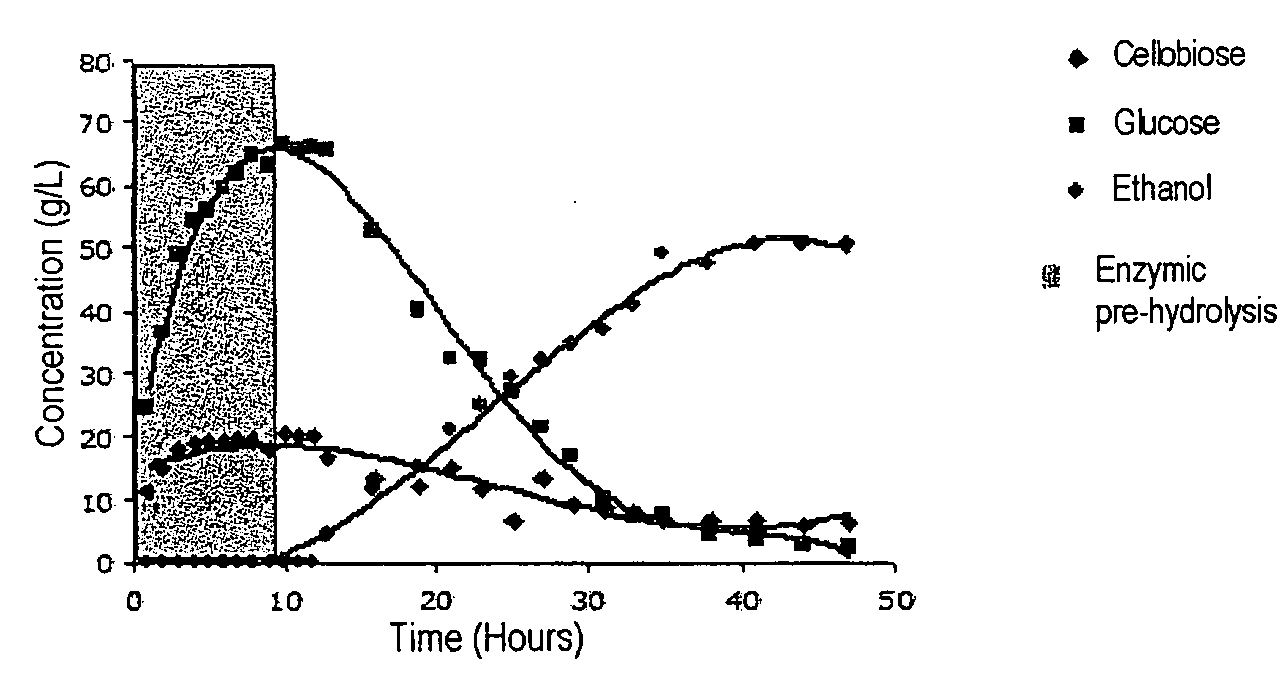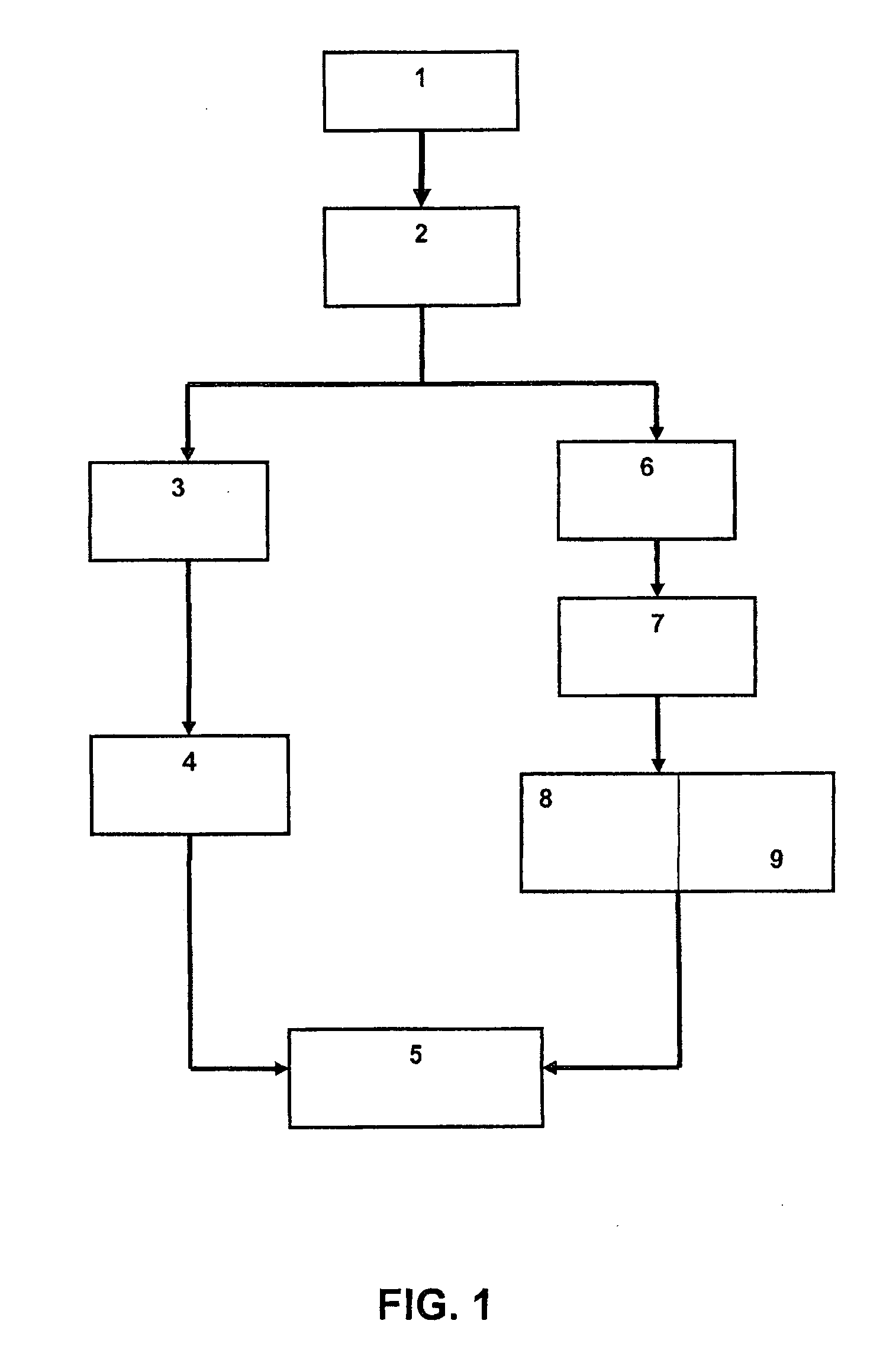Process for the fermentative production of ethanol from solid lignocellulosic material comprising a step of treating a solid lignocellulosic material with alkaline solution in order to remove the lignin
a technology of solid lignocellulosic material and fermentation process, which is applied in the field of process, can solve the problems of limited utilization of carbohydrates by biological agents, inhibiting the metabolism of the majority of microorganisms used in fermentation processes, and achieving high volume production rates
- Summary
- Abstract
- Description
- Claims
- Application Information
AI Technical Summary
Benefits of technology
Problems solved by technology
Method used
Image
Examples
example 1
[0044]The first step of the process is hydrolysis with sulphuric acid (1% v / v) to obtain a hemicellulose hydrolysate and a solid fraction, and acid hydrolysis of the hemicellulose fraction for about 40 minutes, using an optimal solid: liquid ratio. The solid material is removed by pressing in a press reactor specially developed for the process in PI 0502599-8. The hydrolysate is neutralized with Ca(OH)2 and filtered, with the liquid hydrolysate being removed to be submitted to fermentation of the pentoses by an acclimatized biomass which is used at a concentration of 10 g / L, in a bioreactor for 20-30 h, at a temperature of approximately 30° C. The biomass was acclimatized by sequential cell propagation, with the content of hydrolysate being gradually increased. At the end of the fermentation the ethanol is separated and distilled.
[0045]The volume production rate obtained was of the order of 1.0 g / L.h.
example 2
[0046]The solid separated in the reactor as described in the previous example is treated in accordance with the process of the invention. The solid from this step, which is rich in cellulose, is submitted to a series of alkaline washes while still within the press reactor, in order to partially remove the soluble lignin, the aromatic constituents of which inhibit the fermentation process. This step is of fundamental importance in as much as it increases the accessibility of the cellulose fibres to the enzymes.
[0047]The solid residue separated by pressing in the reactor is washed with an alkaline solution (NaOH 4% w / v) and then submitted to successive washes with slightly acidified (HCl) water until reaching pH 6-7, and is fed back to the bioreactor for enzyme pretreatment. In the bioreactor, the solid residue is mixed with water containing micronutrients in the ratio 1:10-20, while maintaining a temperature in the range 30° C. to 50° C., and preferably 47° C., with commercial cellul...
PUM
 Login to View More
Login to View More Abstract
Description
Claims
Application Information
 Login to View More
Login to View More - R&D
- Intellectual Property
- Life Sciences
- Materials
- Tech Scout
- Unparalleled Data Quality
- Higher Quality Content
- 60% Fewer Hallucinations
Browse by: Latest US Patents, China's latest patents, Technical Efficacy Thesaurus, Application Domain, Technology Topic, Popular Technical Reports.
© 2025 PatSnap. All rights reserved.Legal|Privacy policy|Modern Slavery Act Transparency Statement|Sitemap|About US| Contact US: help@patsnap.com



